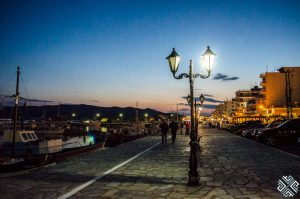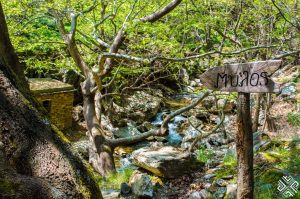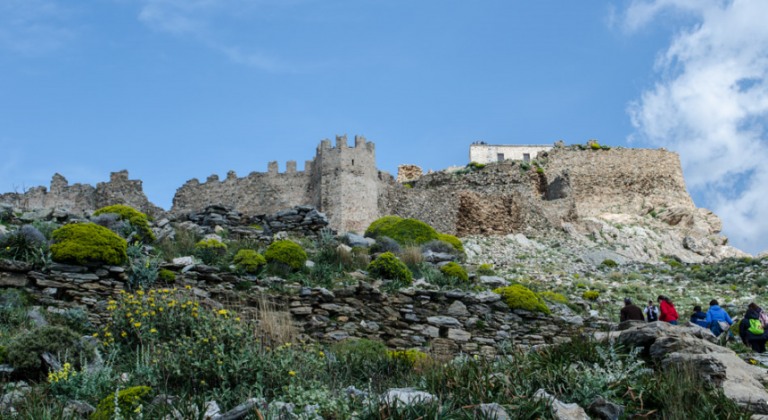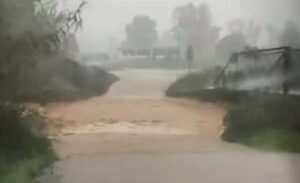Once upon a time the small coastal town of Karystos, located on the second largest island of Evia was famous for its ancient quarries and abundant marble production. During the rule of Julius Caesar (60-44 BC) and Augustus, the Karystos marble was regarded as a valuable building material in Rome. Referred to as the Cipollino marble translating as the onion stone, it was widely used by the Greeks and Romans in the construction of monolithic pillars as well as in paving floors and walls. Today, many of these ancient quarries can be accessed on foot where visitors can observe the traces of an era of abundant marble trade.

The rich diversity of the Karystos landscape combines kilometers of remarkable coastline and majestic mountains, making it a wonderful destination to visit at all times of year. Just a short ferry ride from Athens (one hour), you can get to Karystos from Rafina. Here’s our weekend guide to Karystos, South Evia.

A Weekend Guide to Karystos: What to See and Do
A brief history of Karystos
Following centuries of conquests, numerous rulers and influences Karystos adapted to all who stepped foot on its fertile land. Small in size but rather rich in character, Karystos is one of those places which will take you by surprise.

Read more: passion for hospitality
Ask me anything
Explore related questions





